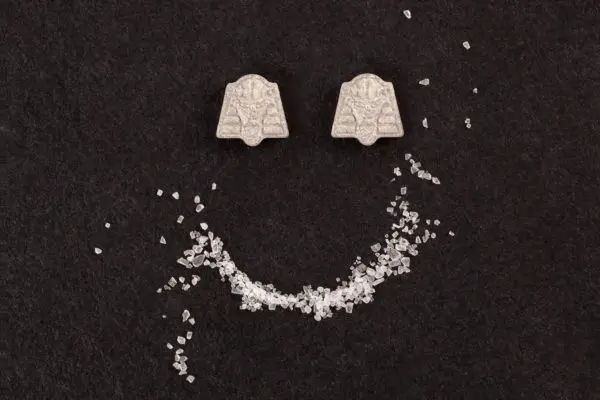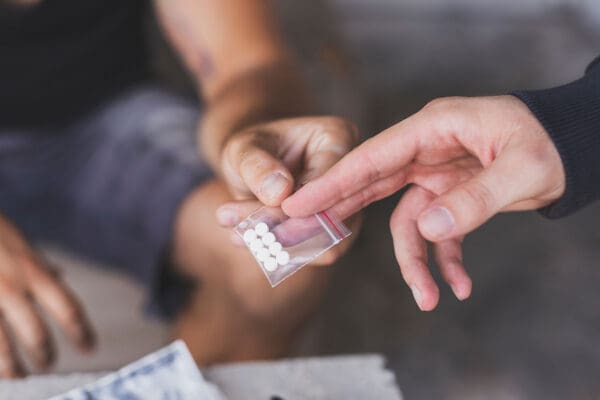MDMA is a substance that earned the street name ‘Ecstasy’ for a reason: It affects the feel-good chemicals of the brain, such as dopamine and serotonin, which makes it a popular recreational drug. However, ‘focusing on the party side undermines the developing science behind MDMA, particularly its potential in treating PTSD.
For whatever the reason for using MDMA, one may be understandably curious about if it is tested for in standard employer urine drug screens and for how long it is detected by these tests. Keep reading to learn what MDMA is, how it works, and how long it can be detected in urine.
What Is MDMA?
3,4-methylenedioxymethamphetamine (MDMA) is both a stimulant and psychedelic substance that produces a euphoric and empathic state, which is why it is considered an “entactogen” meaning ‘to touch within’ rather than entheogen meaning ‘to generate the divine’.Initially synthesized by German scientists for treatment of abnormal bleeding in 1912, MDMA eventually showed success in couple’s therapy in the 1970s by lowering inhibitions and enhancing empathy. However, it became listed as a Schedule 1 drug and was banned in 1985 after gaining popularity for recreational use, especially in the electronic music festival and rave scenes. Research into MDMA as part of MDMA-assisted psychotherapy has been steadily building due to the work of the Multidisciplinary Association of Psychedelic Studies (MAPS), which was founded in the year after MDMA was officially outlawed. MDMA is currently in phase 3 trials in the US, Canada, and Israel and is expected to achieve FDA approval by 2023.
Whether taking MDMA recreationally or therapeutically under the supervision of a medical professional, the question arises: How long does it stay in the system?
How Does It Work?
Neurochemically, MDMA promotes the release of the monoamines serotonin, dopamine, and noradrenaline, and it elevates serum oxytocin. This serves to reduce amygdala activity, resulting in patients experiencing decreased hypervigilance (a common PTSD side effect) and anxiety, increased relaxation, and an overall better mood to be able to explore trauma memories that are normally too painful to stay with long enough to process.
Due to the rewarding and stimulant properties of MDMA, there is potential for habituation or even addiction as well as dangerously elevated blood pressure, heart rates, and body temperatures. These risks are typically well controlled in screened persons and supervised environments of MDMA-assisted therapy, although have resulted in adverse outcomes and even deaths in uncontrolled settings. With frequent and long-term use, MDMA is known to induce neurotoxicity such as cognitive deficits or difficulty regulating emotions.
How Long Does MDMA Stay In Your System?
The question of ‘how long does MDMA stay in your system?’ depends on what method of analysis is chosen. Here, we assume that the reader is interested in knowing how long MDMA shows up in routine drug urine analysis tests given by standard employers. The answer to this question is invariably different than how long MDMA could be detected using other techniques such as forensic methods (e.g. hair analysis).
In standard urine drug screens, drugs are detected by immunoassay antibody testing. When drugs of certain structures appear at threshold levels, the immunoassay will turn ‘positive’. Therefore the drug must not only be present but be present in sufficient concentrations to be detected. Along with the presence of drugs, urine assays also test for things such as electrolyte content, temperature, and creatinine composition to verify the urine is real and has not been tampered with (e.g. drinking too much water to dilute the specimen and reduce concentrations of drugs below detectable levels).
MDMA is a stimulant amphetamine and is also metabolized to another active metabolite amphetamine (MDA). Use of a standard immunoassay after MDMA use will typically show positive results for ‘amphetamine’ use for 48-72 hours after using MDMA. It may be noted that detection of MDMA or its metabolites via more sensitive methods (e.g. GC-MS) can detect use in urine for around a week after last use.
Conclusion
Most MDMA is eliminated from the body within 24 hours and MDMA is detectable in urine by standard urine immunoassay drug screens for approximately 48-72 hours.







